September 28, 2007
My Coney Island Baby
I recently came upon some images on the web of an installation called "My Coney Island Baby", completed in 2004. It's located at the Stillwell Avenue Subway Terminal, which is, appropriately enough, the subway stop for Coney Island in New York City.
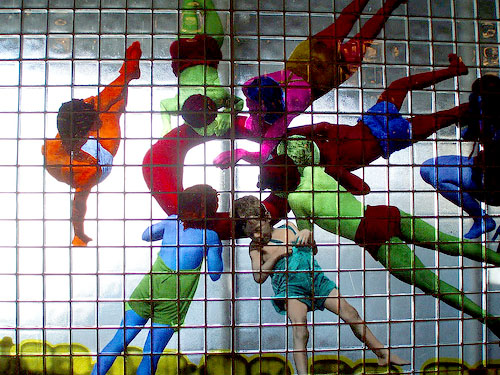
Another new direction in stained glass? or just a curiousity?
You decide.
To put the installation in context, the detail above is part of a 300 foot long 17 foot high wall made of some 4,250 3" thick glass blocks. All the images are related to different amusement park attractions at Coney Island.
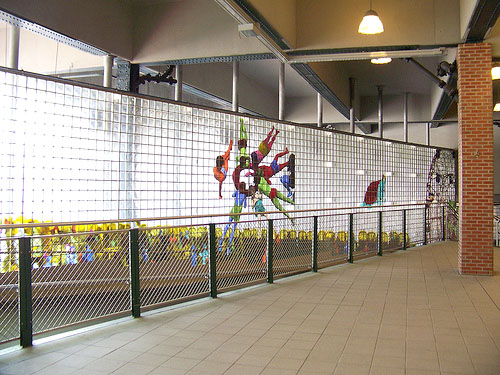
I've never been to Coney Island so I can't identify the specific images and what they represent. For instance, I believe this depicts part of the roller coaster known as 'The Cyclone', but I only surmise this from what I've read and seen on the web.
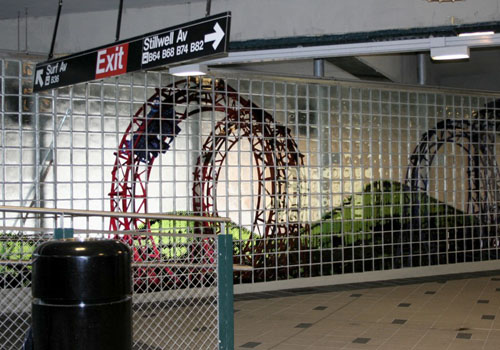
(photo by Robbie Rosenfeld)
..and I do not know what this is, other than maybe a sideshow attraction of some kind, though what specific one I've no idea.
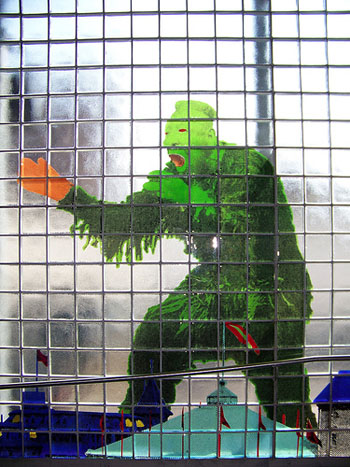
I do know that Coney Island is famous for its hot dogs, hence the 12 foot long hot dog.
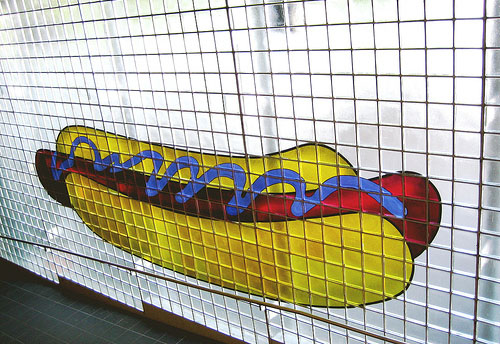
Designed by Robert Wilson, the theatre designer and director who is most famous for his collaboration with the composer Philip Glass on the Opera Einstein on the Beach. The Coney Island installation is most likely Wilson's only work that can in any way be described as 'stained glass', though he's done much 'installation art'. I was actually a little surprised to see that he designed it. I tend to associate him with a colder and more serious aesthetic. 'My Coney Island Baby' seems a bit on the light and whimsical side for him.
There are some nice big images and more 'in context' shots on this webpage by Christian Wassman, who collaborated on the piece.
Seemingly, there were many hands on this project. The images were screenprinted by Mayer of Munich in Germany, with the image sandwiched between two 1 ½ thick glass blocks to make the 3" glass blocks.
There is a description of the technical process from PittsburghCorning in this Case Study. Granted, the article is mainly plugging Pittsburgh Corning’s VISTABRIK® glass blocks that were used in the wall, but the process is described in enough detail to be an interesting read.
I found another technically based article which is more focused on the company who apparently put it all together, Glass Block of America.
There is a mention of the project on Glass block's website, but it's the exact same text of the case study as was used by the VISTABRIK® people.
Curiously, there is also an "art window" section of Glass Block's website which seems to use the same (or similar) technology tailored for smaller commissions. Unfortunately, the generic designs they use to promote this idea are pretty tame and lame.
Posted by Tom at September 28, 2007 12:35 PM